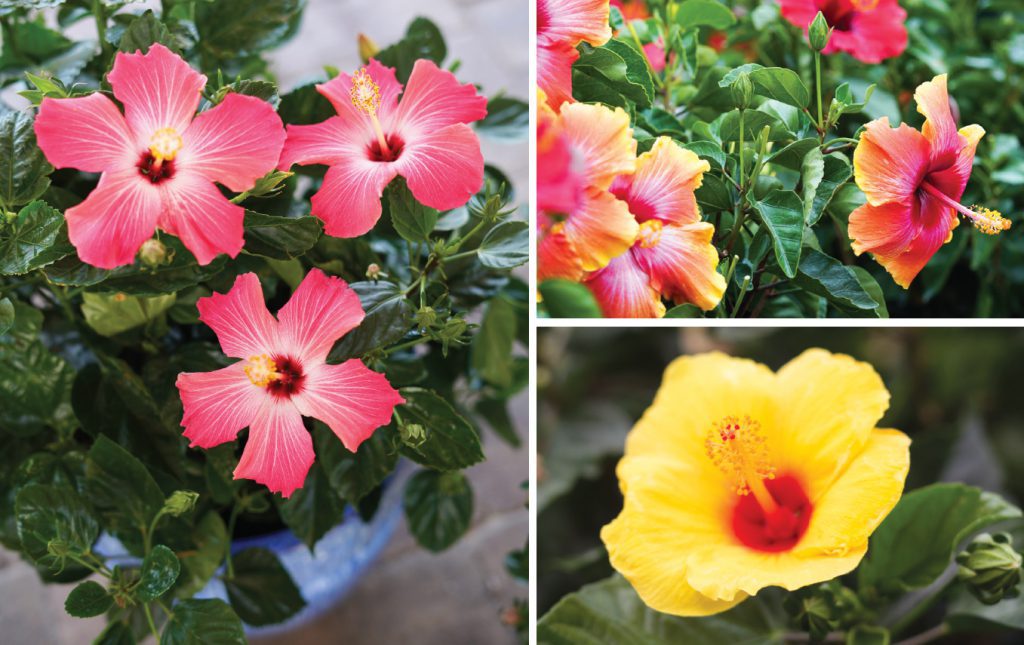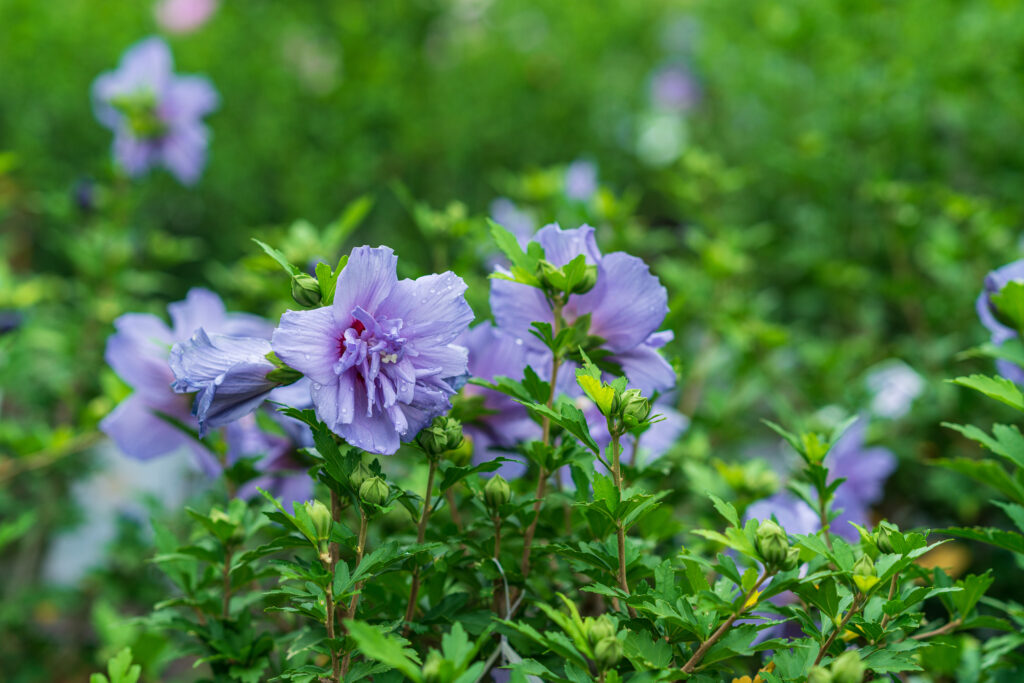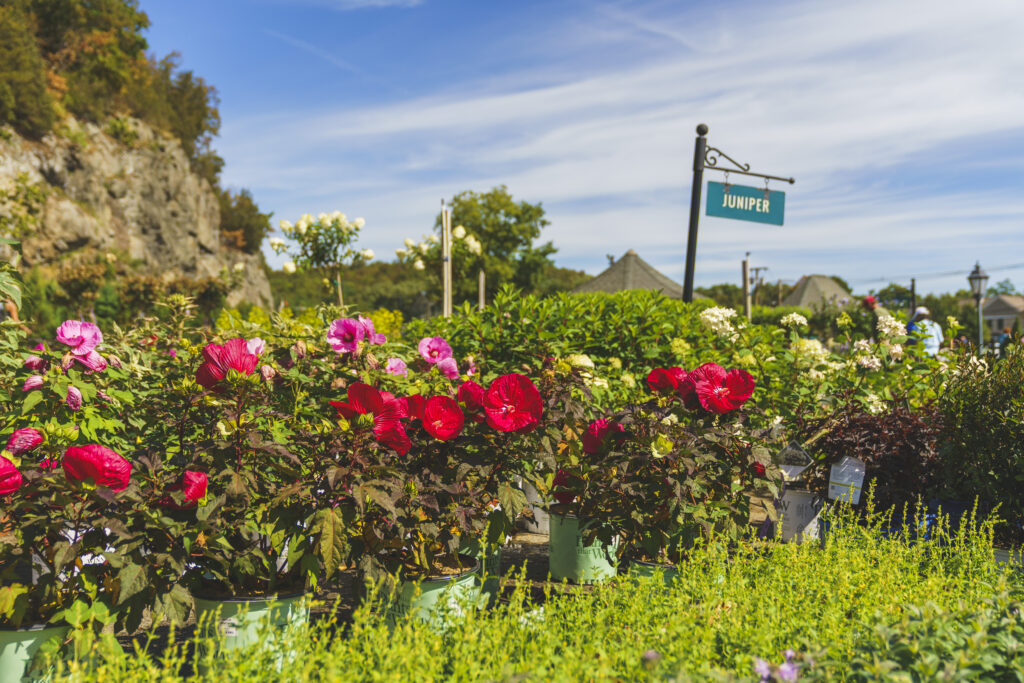June 22, 2023
Exploring the Enchanting Trio of Hibiscus Varieties
In tropical climates, hibiscus plants can grow right in the ground and flourish into large, lush shrubs or small trees, blooming nearly all year. Here in New England, our hibiscus show is a bit smaller and seasonal — but no less magical! EEven in Massachusetts, there’s a wonderful range of hibiscus varieties to enjoy, and it helps to know which type you’re planting and how it will behave in your garden.
Let’s take a closer look at the three most common types you’ll find here: Tropical Hibiscus, Rose of Sharon, and Perennial Hibiscus
.

Tropical Hibiscus
Tropical Hibiscus
Tropical Hibiscus (Hibiscus rosa-sinensis) is the eye-catching variety you’ll spot in our greenhouse or mixed in with annuals during the warmer months. These beauties thrive in USDA zones 10–11 (think Florida and warmer) but can’t handle a New England winter. Treat them as annuals for a summer splash of color, or, if you have a bright, sunny spot indoors, keep them as a cheerful houseplant and enjoy blooms all year long.
There are thousands of tropical hibiscus cultivars with stunning flowers in every shade you can imagine. Some favorites are ‘Red Hot’, ‘Chinese Lantern’, ‘Mahoe’, and ‘Fiji Island’. Fun fact: in parts of Africa and the Middle East, the dried flowers of red hibiscus are brewed into a tasty tea called karkade, enjoyed hot or cold. It’s believed to have health benefits and is used traditionally to soothe colds, high blood pressure, and more.

Rose of Sharon Hibiscus
Rose of Sharon Hibiscus
Rose of Sharon (Hibiscus syriacus) is a hardy deciduous shrub perfect for New England gardens — it’s reliable in USDA zones 5–9. These shrubs drop their leaves in winter and leaf out again in spring with very little fuss.
Rose of Sharon blooms later in the season, bringing a welcome burst of color when many other plants are winding down. It’s low-maintenance, heat and drought tolerant, deer resistant, and attracts hummingbirds and butterflies. You’ll find them in a range of shapes — dwarf, upright, columnar, and even tree form — and blooms can be single, double, or semi-double in shades of pink, red, purple (sometimes so deep they look blue!), and multi-color. They’re even salt tolerant, making them great for coastal gardens.

Perennial Hibiscus
Perennial Hibiscus
Perennial Hibiscus (Hibiscus moscheutos) is a real showstopper for the perennial garden. Hardy in USDA zones 4–9, this type will die back completely each winter — by spring, you’ll see bare stems that look dead, but don’t worry! Leave the stems through winter for extra protection, then cut them back nearly to the ground in early spring.
Once the weather warms, you’ll see new shoots emerge quickly. By mid to late summer, enjoy massive blooms the size of dinner plates — often as big as your face! It’s an easy way to add drama and tropical flair to your summer garden, year after year.
Ready to add hibiscus to your garden or patio? Stop by and let us help you pick the perfect type for your space and care tips to keep it thriving!
